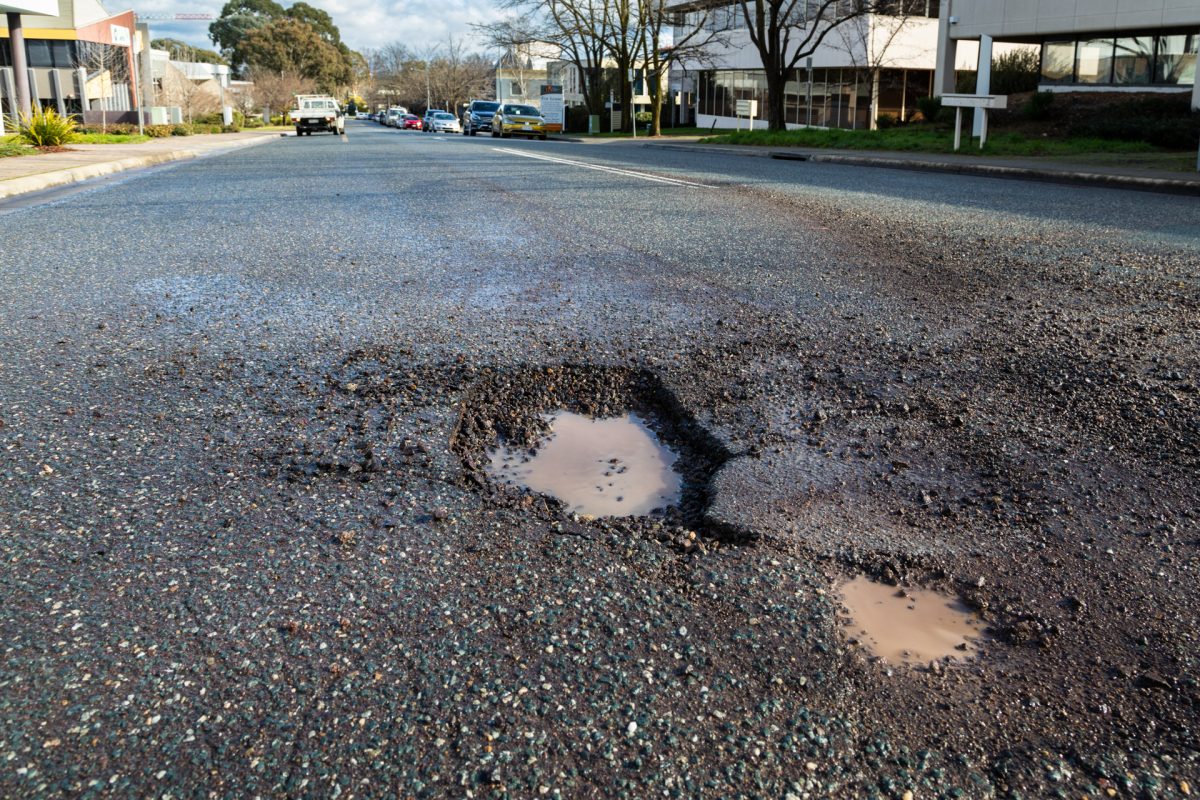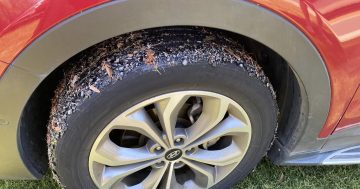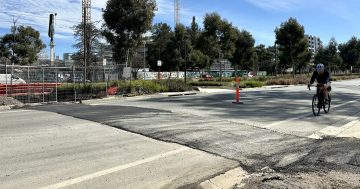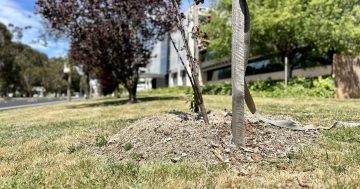
Potholes can be reported via the ACT Government’s Fix My Street portal. Photo: Michelle Kroll.
Mallie Taylor had merged onto the Tuggeranong Parkway near the National Arboretum last week when suddenly, it was right there, in front of her car.
“There was no way I could have avoided it,” she says. “It was so big, it stretched outside the lane onto the side of the road too.”
There was a loud thud and “some choice words” as one of her hubcaps frisbee-d into the air behind her and rolled down the side of the road. Mallie had hit a pothole. She was left with a flat tyre, dented rim, broken wheel control arm, a $337 repair bill, and no way to get to work.
She’s not the only one.
“My friend went back about an hour later and there were about 10 cars parked along the same stretch of road, changing tyres,” she says.
“I pay around $1100 a year for registration. How much of that really goes towards paying for the roads to be car-worthy? It’s not just about the money, either. It’s the stress as well. I’m a widow with one car and a job that public transport can’t get me to. What am I supposed to do?”
Mallie plans to file a damage claim with the ACT Government.
She’s not the only one.

What you can see of the pothole damage to Mallie Taylor’s car. Photo: Mallie Taylor.
The ACT Government saw a spike in the number of reported potholes in August. Since the beginning of the year to the end of July, a total of 635 potholes were reported. Last month alone, 339 potholes were reported.
A spokesperson for the ACT Government said the increase can be attributed to three years of wetter-than-average weather.
“This year will be our third La Niña weather pattern in a row, with road damage occurring across the entire of south-east Australia.”
But it’s beginning to cost them.
The ACT Government has paid out 50 pothole damage claims so far in 2022, up from 40 last year and 16 in 2020. This amounts to $43,148.96, with the average claim worth about $860. Claims in 2021 totalled $39,024.
Transport Canberra and City Services’ (TCCS) executive branch manager of city operations Ken Marshall told an estimates hearing in August there were certain circumstances under which motorists could make a claim to cover damage caused by potholes on public roads.
“There are processes by which TCCS will consider those claims and, in some circumstances, some compensation will be paid,” he said. “But those are subject to the specific details of each specific case.”
Roads ACT manages the 5900 kilometres and 20 million square metres of road in the ACT. They say pavement has a life expectancy of 10 to 20 years.
“As the road surface wears and ages, small cracks develop in the pavement which permits water to enter the underlying surface of the pavement,” the ACT City Services website reads.
“Water infiltration, combined with the continual stress imposed by the flow of traffic, will considerably weaken the pavement. If this happens, potholes, major cracks, pavement deformation and ultimately road failure will result.
Roads ACT says preventative resealing of the pavement is the most cost-effective method of maintaining good road conditions.
Engineering Australia, the peak body for the engineering profession in Australia, agree local road managers must ensure asphalt is refreshed and replaced frequently to avoid water seeping in.
“The use of high-quality materials with sufficient thickness in construction, effective drainage below the road, adequate drainage to prevent water from staying on the road’s surface, and frequent maintenance of subsurface drains will give roads the best chance of being resilient,” a spokesperson said.
“All councils and road authorities should ensure investment in research and data collection so that new road building and road maintenance meets current and predicted climate and usage conditions.”
The ACT Government is currently auditing the road surface condition as part of a new trial program involving rubbish trucks fitted with artificial-intelligence pothole detection technology. There is no report on how successful this has been yet.
The community can report potholes online via Fix My Street. Alternatively, they can phone Access Canberra on 13 22 81. Once reported, potholes are generally repaired within 10 working days, depending on weather and traffic. Potholes of immediate safety concern are generally fixed within 48 hours.

















